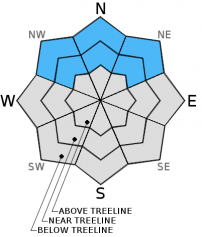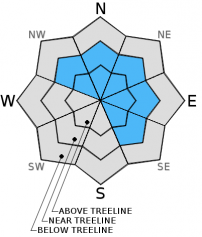| Monday | Monday Night | Tuesday | |
|---|---|---|---|
| Weather: | Sunny | Clear | Sunny |
| Temperatures: | 23-28 deg. F. | 18-25 deg. F. | 28-34 deg. F. |
| Mid Slope Winds: | East | Variable | Variable |
| Wind Speed: | 10-20 mph with gusts to 30 mph decreasing to 10-15 mph in the afternoon | Light | Light |
| Expected snowfall: | 0 | 0 | 0 |
| Monday | Monday Night | Tuesday | |
|---|---|---|---|
| Weather: | Sunny | Clear | Sunny |
| Temperatures: | 20-27 deg. F. | 18-25 deg. F. | 28-34 deg. F. |
| Ridge Top Winds: | East | East | North |
| Wind Speed: | 25-35 mph with gusts to 60 mph decreasing to 10-20 mph with gusts of 30-40 mph in the afternoon | 10-15 mph decreasing after midnight | Light in the morning becoming 10-15 mph in the afternoon |
| Expected snowfall: | 0 | 0 | 0 |



























